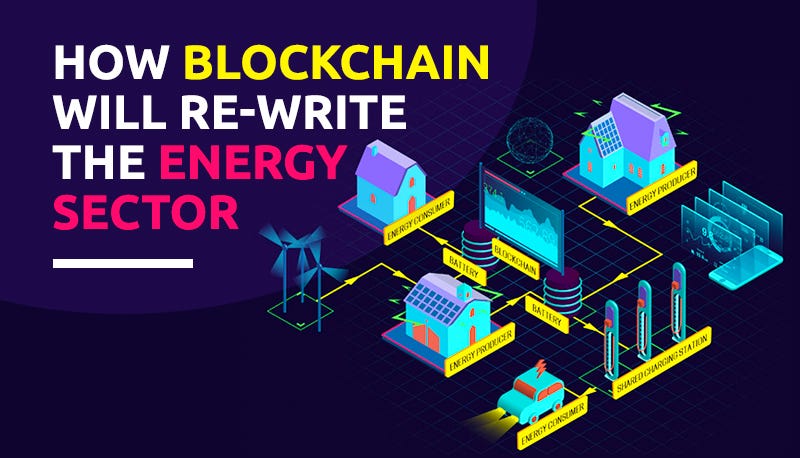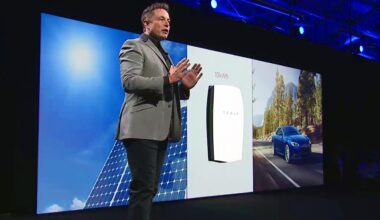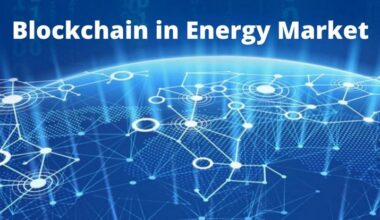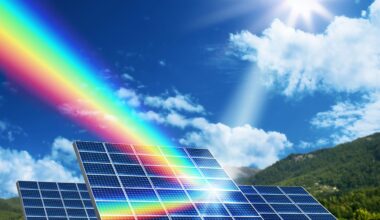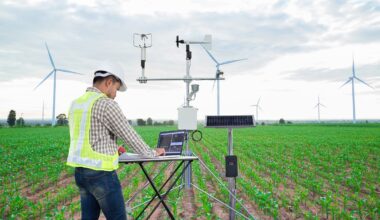Decoding Blockchain’s Role in the Renewable Energy Market
Introduction
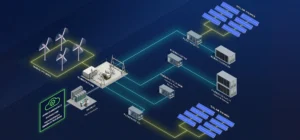
Blockchain—the very word sparks curiosity, debate, and, often, confusion. If you’ve followed tech trends over the past decade, you’ve likely come across blockchain in conversations about cryptocurrency, supply chain transparency, and even healthcare data management. But here’s a twist you might not have seen coming: Blockchain is making big waves in the renewable energy market, and it could revolutionize how we generate, distribute, and trade energy on a global scale.
Welcome to this long-form, deep-dive blog post, where we’ll unravel why blockchain holds such enormous potential in an industry that’s critical to combating climate change—renewable energy. By the end of this post, you’ll understand how blockchain can drive transparency, efficiency, and trust across energy supply chains, facilitate peer-to-peer energy trading, and even catalyze the growth of carbon offset markets. More importantly, you’ll come away with actionable insights, step-by-step guides, and answers to all the burning questions you may have about integrating blockchain solutions into the renewable energy sector.
This post isn’t just for hardcore tech gurus or finance geeks—it’s for anyone interested in the intersection of clean energy and emerging technology. Maybe you’re an investor scouting your next big opportunity, an entrepreneur in the energy sector looking for a competitive edge, or simply an enthusiast who wants to stay on top of cutting-edge developments that could shape our planet’s future. Regardless of who you are, you’ll find real value in the sections that follow.
What You’ll Gain:
- A clear, jargon-free understanding of blockchain and how it works.
- An in-depth look at renewable energy challenges and how blockchain addresses them.
- Step-by-step guides to implementing blockchain solutions in energy markets.
- Real-life case studies showing successful blockchain pilots and fully scaled deployments.
- A roadmap of common pitfalls and exactly how to sidestep them.
- Future trends that point to even more exciting innovations on the horizon.
So, grab a cup of coffee (or tea, if that’s your preference), get comfortable, and let’s dive into the heart of blockchain’s role in the renewable energy market—all while keeping an eye on how you can potentially monetize these opportunities, whether through AdSense, affiliate marketing, or strategic business partnerships.
Table of Contents
- Blockchain Basics: Why It Matters More Than Ever
- Key Challenges in Renewable Energy Markets
- How Blockchain Addresses Renewable Energy Pain Points
- Step-by-Step Blueprint: Implementing Blockchain in Renewable Energy
- 4.1 Feasibility Assessment
- 4.2 Choosing the Right Blockchain Platform
- 4.3 System Architecture and Integration
- 4.4 Tokenization and Smart Contracts
- 4.5 Deployment and Pilot Testing
- 4.6 Monitoring, Evaluation, and Scaling
- Real-World Case Studies
- 5.1 Case Study 1: Peer-to-Peer Energy Trading in Australia
- 5.2 Case Study 2: Microgrids in East Africa
- 5.3 Case Study 3: Corporate Carbon Accounting via Blockchain
- Common Pitfalls and How to Avoid Them
- Future Trends: What’s Next for Blockchain in Energy?
- Frequently Asked Questions (FAQs)
- Conclusion: The Final Word on Blockchain’s Energy Transformation
Blockchain Basics: Why It Matters More Than Ever
1.1 Demystifying the Concept of Blockchain
Blockchain is often described as a digital ledger distributed across a network of computers (or nodes). Each transaction—whether it’s a monetary exchange, a data point, or a record of energy produced—is grouped into a “block.” Once verified and sealed using cryptography, the block is chained (hence the name) to the previous block, forming an immutable record of all transactions.
Key Attributes of Blockchain:
- Decentralization: No single authority controls the database; instead, it’s maintained by numerous nodes, preventing single points of failure.
- Immutability: Once a block is added, altering it retroactively is practically impossible without rewriting subsequent blocks.
- Transparency: All nodes have access to the same ledger, promoting trust and reducing fraudulent activities.
- Automation with Smart Contracts: Self-executing code that triggers specific actions when conditions are met, removing the need for intermediaries.
In renewable energy contexts, blockchain can record how much energy has been produced by each panel or turbine, track carbon credits, and even facilitate direct transactions between producers and consumers.
1.2 Blockchain Beyond Cryptocurrency
It’s true that blockchain gained mainstream attention through Bitcoin and other cryptocurrencies, but it has evolved far beyond digital currencies. From supply chain management in retail to digital identity solutions for refugees, blockchain’s trustless, transparent nature makes it a powerful tool for any scenario that needs secure, tamper-proof records.
The energy sector, in particular, is ripe for disruption. Why? Because we’re dealing with massive amounts of data—energy production stats, consumption patterns, carbon offsets, trading records—and multiple stakeholders—utilities, producers, consumers, regulators, and financiers. Blockchain’s core features can orchestrate these moving parts more efficiently and transparently.
1.3 Growing Market and Investment Landscape
The global blockchain market is expected to reach hundreds of billions of dollars in the next few years, according to market research firms like Grand View Research. And the renewable energy sector is no slouch either, with worldwide investments in clean energy topping $300 billion annually. Merging these two high-growth arenas creates powerful synergies—the sort of synergy that draws venture capital and corporate funding at a rapid rate.
But not all blockchains or energy solutions are created equal. As you read on, you’ll discover the key considerations and the nitty-gritty details of how to implement, scale, and profit from blockchain-based renewable energy initiatives. That’s exactly why understanding the fundamentals is crucial before you dive deeper.
Key Challenges in Renewable Energy Markets
2.1 Intermittency and Grid Stability
Unlike fossil fuel power plants that can ramp up or scale down output on demand, renewable sources like solar and wind are intermittent. This unpredictability can strain the grid if wind suddenly drops or a storm covers solar panels. Energy operators need real-time data and robust trading mechanisms to balance supply and demand on the fly.
2.2 Limited Transparency in Carbon Credits and RECs
Carbon credits and Renewable Energy Certificates (RECs) are critical for incentivizing green energy, but the system isn’t perfect. Manual processes, siloed registries, and potential double-counting plague existing frameworks. Fraud remains a concern—how can a buyer verify that a carbon credit truly corresponds to a legitimate offset project?
2.3 High Transaction and Administrative Costs
From grid operators and utilities to energy producers and consumers, the renewable energy supply chain involves multiple middlemen. Each transaction—whether it’s buying solar electricity or trading carbon credits—often requires verification, settlement, and administration, leading to high overhead costs and inefficiencies.
2.4 Financing Barriers
Securing financing for large-scale renewable projects, especially in developing countries, can be a nightmare. Banks and investors need reliable data, trust in operational frameworks, and transparent ways to track cash flows. Traditional methods often slow project development significantly, leaving potential clean power capacity untapped.
2.5 Lack of Consumer Participation
In many places, consumers lack direct ways to purchase renewable energy from local sources or to sell excess power they generate (e.g., rooftop solar) to neighbors. A more democratized energy system, where end-users can trade electricity among themselves, remains elusive under traditional, centralized frameworks.
2.6 Regulatory Complexity
Energy sectors worldwide are highly regulated. Licenses, compliance rules, tariffs—the list goes on. Adding blockchain into the mix raises new questions around digital signatures, cross-border trading, and data protection. While some regulators are forward-thinking, others are more cautious, leading to a patchwork of regulatory stances that can slow adoption.
These challenges not only hinder the efficiency of renewable energy adoption but also inflate costs, limit investment, and undermine consumer trust. If you’re in the industry—whether as an investor, developer, or policymaker—understanding these hurdles is step one to overcoming them. Enter blockchain: A technology tailor-made to tackle transparency, trust, and multi-party coordination problems at scale.
3. How Blockchain Addresses Renewable Energy Pain Points
3.1 Trust and Transparency
Blockchain creates a single source of truth. Imagine every kilowatt-hour of green energy generated is recorded forever on a distributed ledger. Utilities, consumers, investors, and regulators can all trust these records without needing a centralized authority to confirm them. This trust extends to carbon credits, ensuring once a credit is claimed, it can’t be reused or double-counted.
3.2 Peer-to-Peer Energy Trading
One of the most exciting applications of blockchain in this arena is P2P energy trading. Through smart contracts, residents with solar panels can sell excess energy directly to neighbors, bypassing intermediaries. The contract handles metering, billing, and payment settlement automatically—no middleman, minimal cost.
3.3 Automated Settlements and Lower Costs
Say goodbye to manual reconciliations. With blockchain, each transaction—be it buying RECs or settling an energy trade—happens based on pre-defined smart contract rules. This drastically cuts down on administrative overhead and middleman fees.
3.4 Real-Time Grid Balancing
By integrating IoT devices and sensors, a blockchain-based system can track real-time production and consumption across a network of solar farms, wind farms, or microgrids. When supply or demand changes, the system can instantly trigger smart contracts to adjust flows, store energy, or initiate demand-response actions—keeping the grid stable with minimal human intervention.
3.5 Simplified Financing and Crowdfunding
Tokenization—representing real-world assets as digital tokens on a blockchain—can democratize investment in renewable projects. Instead of a single bank providing capital, thousands of individual investors can pool funds by buying tokens. Each token represents fractional ownership, entitling holders to a share of the project’s revenue. This lowers the barrier to entry for clean energy investments and opens new capital channels, especially in underserved regions.
3.6 Secure Carbon Accounting
Carbon offsets and RECs can be tokenized, with every transaction recorded on-chain. This ensures companies claiming carbon neutrality can prove it, regulators can track compliance in real-time, and environmental groups can confirm these credits aren’t being double-sold. It’s a win-win for sustainability and the fight against climate fraud.
In short, blockchain directly targets the core pain points hampering renewable energy adoption: trust, cost, complexity, and inefficiency. The result is a future where energy markets are borderless, transparent, and highly efficient—all crucial elements for accelerating the global shift toward sustainable power.
4. Step-by-Step Blueprint: Implementing Blockchain in Renewable Energy
If the above sections piqued your interest, you might be asking: Where do I start? Below is a comprehensive roadmap for rolling out blockchain solutions in the renewable energy sector. This blueprint applies to startups, established utilities, community-run microgrids, and everything in between.
4.1 Feasibility Assessment
Before deploying any tech solution, ask the fundamental question: Does blockchain truly add value here? Not every problem calls for blockchain. Some tasks can be solved by a centralized database or existing enterprise software. Conduct a thorough cost-benefit analysis. Consider:
- Scalability: Will the system need to handle thousands of transactions per second (TPS)?
- Complexity of Stakeholders: Are multiple players with limited trust needing real-time transaction verifications?
- Regulatory Environment: Is the local government supportive or at least open to blockchain innovation?
Key Tools: SWOT analysis frameworks, stakeholder interviews, whiteboard sessions with energy experts, and possibly an external consultant with domain expertise.
4.2 Choosing the Right Blockchain Platform
The next step is picking a platform. Consider:
- Public vs. Private (Permissioned): Public blockchains like Ethereum or Polkadot offer greater decentralization, but can have higher transaction fees or slower throughput. Private networks (e.g., Hyperledger Fabric, Corda) allow better control and privacy, which some energy operators prefer.
- Consensus Mechanisms: Proof of Stake (PoS) vs. Proof of Authority (PoA) vs. other variants. PoS is generally more energy-efficient and might align better with sustainability goals.
- Smart Contract Capabilities: Ensure the platform supports robust, Turing-complete languages (e.g., Solidity, Vyper, or Chaincode), enabling advanced logic for P2P trading or dynamic pricing.
Key Tools: Developer community resources, comparison websites, platform documentation, and testnets.
4.3 System Architecture and Integration
Any blockchain deployment in energy won’t exist in a vacuum; it needs to integrate with:
- Existing Grid Systems: Supervisory Control and Data Acquisition (SCADA) systems for real-time data.
- IoT Sensors and Meters: Smart meters, inverters, and battery management systems that feed data to the blockchain.
- Backend Databases: For analytics, audits, and historical data logs.
- Frontend User Interfaces: Mobile apps or web dashboards for consumers, producers, and administrators.
Ensure your solution uses APIs or specialized middleware to sync data reliably. Latency and bandwidth constraints also need consideration, especially if some nodes are in remote areas with intermittent connectivity.
4.4 Tokenization and Smart Contracts
Once integrated, you can harness smart contracts and tokenization for real-world energy assets:
- Energy Tokens: Each token might represent a specific amount of electricity—say, 1 kWh.
- Carbon Credits: Represent offset projects or RECs as distinct tokens.
- Ownership Tokens: Investors can buy fractional shares in a solar farm or wind project.
Smart Contracts can automate recurring tasks:
- P2P Trades: If your neighbor’s battery is low, the contract automatically transfers your extra solar power if the price is right.
- Billing & Settlement: Trigger automatic payments upon transaction confirmation, removing manual invoicing.
4.5 Deployment and Pilot Testing
It’s usually best to start small. Pilot in a limited geographic region or with a single microgrid. During this phase:
- Stress-Test the Network: Evaluate performance under peak load, measure transaction times.
- User Training: Ensure community members, technicians, and administrative staff understand how to use the system.
- Regulatory Compliance: Double-check local regulations, especially for energy trading and data privacy.
Gather feedback, fix bugs, and only then consider scaling up.
4.6 Monitoring, Evaluation, and Scaling
After a successful pilot, measure Key Performance Indicators (KPIs) like:
- Energy Transaction Volume: How many kWh are traded daily?
- Cost Savings: Has the system reduced overhead or middleman fees?
- Grid Stability: Are blackouts or load shedding events reduced?
- Environmental Impact: Has it boosted renewable adoption or lowered carbon footprints?
Once these metrics show a strong ROI, replicate or scale the solution to new regions, user bases, or additional energy sources (e.g., combining solar + wind + hydropower). This might involve forging partnerships with utilities, municipalities, or major corporations seeking to meet ESG goals.
5. Real-World Case Studies
5.1 Case Study 1: Peer-to-Peer Energy Trading in Australia
Context: Several neighborhoods in Australia boast high solar adoption rates, with households often producing excess energy.
Blockchain Solution: A startup launched a peer-to-peer platform allowing homeowners to trade surplus solar power with neighbors directly. Prices were set by supply-demand dynamics, with transactions recorded and settled on a permissioned blockchain.
Outcome: Residents reported lower electricity bills, utilities reduced strain on the grid, and the startup gained international exposure. Critics note some regulatory hurdles still need fine-tuning, but overall, it’s a promising model for suburban areas worldwide.
5.2 Case Study 2: Microgrids in East Africa
Context: Rural communities in parts of East Africa lack reliable grid access. Diesel generators are common but expensive and polluting.
Blockchain Solution: International NGOs partnered with local cooperatives to establish solar-based microgrids. A blockchain-based payment and transaction system records each watt-hour produced and consumed, enabling villagers to pay digitally.
Outcome: The project dramatically cut diesel usage, lowered electricity costs, and provided stable power for businesses. The transparency also helped attract additional funding. Observers see potential for scaling across Africa, accelerating rural electrification.
5.3 Case Study 3: Corporate Carbon Accounting via Blockchain
Context: A multinational corporation wanted to prove its carbon neutrality claims to consumers and regulators.
Blockchain Solution: They tokenized each carbon offset and integrated smart contracts that retire tokens as soon as they’re used, preventing double-counting.
Outcome: Independent auditors could instantly verify carbon offsets, enhancing the corporation’s sustainability credentials. The system earned positive PR and boosted investor confidence in the company’s green strategy.
6. Common Pitfalls and How to Avoid Them
Adopting blockchain for renewable energy has huge upsides, but it’s not free of pitfalls. Here are the most common mistakes—and how to bypass them:
- Overhyping the Tech
- Problem: Believing blockchain alone solves every issue.
- Solution: Conduct a thorough use-case analysis. Ensure the problem truly requires decentralization and transparency.
- Ignoring Scalability
- Problem: Some blockchains can’t handle high transaction volumes—leading to delays and high fees.
- Solution: Pick platforms designed for enterprise or use a layer-2 solution to speed transactions.
- Regulatory Blind Spots
- Problem: Failing to secure necessary permits or ignoring compliance rules for energy markets.
- Solution: Consult legal experts early. Pre-emptively work with regulators to shape supportive policies.
- Inadequate Data Quality
- Problem: Smart contracts rely on external data (“oracles”). If those data sources are unreliable, the system fails.
- Solution: Use trusted hardware or multiple oracles. Verify data integrity regularly with audits.
- Neglecting User Experience
- Problem: Clunky interfaces or high technical barriers drive away end-users.
- Solution: Focus on intuitive design. Provide training or simple tutorials, especially for communities unfamiliar with blockchain.
- Lack of Interoperability
- Problem: Inflexible networks that don’t talk to each other hamper broader adoption.
- Solution: Use cross-chain tools or adopt widely supported protocols. Plan for future expansions from day one.
In short, do your homework, engage stakeholders, and plan meticulously to avoid these traps. The right approach can yield not just operational efficiency but also long-term trust and scalable success.
7. Future Trends: What’s Next for Blockchain in Energy?
7.1 AI-Enabled Blockchain
We’re witnessing a convergence of artificial intelligence (AI) and blockchain. AI can analyze massive energy consumption data sets to predict supply-demand dynamics, while blockchain provides a tamper-proof record of all transactions. This synergy could drastically improve grid balancing, reduce waste, and even automate energy trading decisions with minimal human oversight.
7.2 Decentralized Autonomous Organizations (DAOs) in Energy
DAOs are organizations governed by smart contracts, eliminating traditional hierarchy. Picture a community-run solar farm where token holders vote on expansions, maintenance schedules, and profit allocation—all via on-chain governance. This approach fosters communal ownership and can boost local buy-in for renewable projects.
7.3 Carbon Trading and NFTs
We’re also seeing carbon credits evolve into Non-Fungible Tokens (NFTs), each representing a unique offset project. This tokenization can add layers of authenticity and traceability, fueling secondary markets and letting individuals invest in carbon offset projects just like they’d buy digital art or collectibles.
7.4 Global Energy Interconnection
As the world moves toward integrated smart grids, cross-border energy trading becomes more frequent. Blockchain could serve as the universal “language” for trust and settlement across nations, enabling a fluid global marketplace for green energy. This is still on the horizon, but pilot programs and consortia are already emerging.
7.5 Mainstream Adoption by Utilities
Major utilities worldwide are increasingly experimenting with or adopting blockchain solutions for load management, billing, and renewable energy sourcing. While early projects faced skepticism, success stories are encouraging more utilities to pilot or even fully deploy these solutions.
In summary, the future is bright. Blockchain is poised to become a foundational layer in how we produce, distribute, and transact energy globally, especially as climate pressures intensify and the world prioritizes renewable solutions.
8. Frequently Asked Questions (FAQs)
Below are some quickfire FAQs to further clarify pressing concerns around blockchain and renewable energy:
1. Is blockchain necessary, or can we use a traditional database for renewable energy tracking?
A traditional database can work for some use cases, but blockchain offers decentralization, immutability, and trustlessness. If your system involves multiple parties who don’t fully trust each other, or if you need a publicly auditable ledger, blockchain provides significant advantages.
2. How does blockchain address the energy-intensive reputation it gained from cryptocurrency mining?
Modern blockchains often use more energy-efficient consensus mechanisms like Proof of Stake (PoS) or Proof of Authority (PoA). Additionally, private (permissioned) networks can be far less resource-intensive. The eco-footprint can be minimal compared to the benefits gained in transparency and efficiency.
3. Can small communities or local co-ops realistically implement blockchain solutions?
Absolutely. Many pilot projects in rural areas or smaller municipalities have shown it’s feasible and even cost-effective. The key is starting with scalable solutions and partnering with a blockchain-focused vendor or developer who understands the local context.
4. What about the regulatory landscape? Isn’t it a major hurdle?
Yes, regulation can be a bottleneck, especially for energy trading and token issuance. However, many jurisdictions are warming up to blockchain if it enhances energy efficiency and promotes sustainability goals. Engaging policymakers and regulators early is crucial to smooth implementation.
5. How do I get started if I want to invest in or develop a blockchain-based energy solution?
- Conduct a feasibility study.
- Choose the right blockchain platform.
- Work with domain experts in energy and legal compliance.
- Launch a pilot to validate assumptions.
- Secure funding through venture capital, grants, or token sales, if regulations allow.
9. Conclusion: The Final Word on Blockchain’s Energy Transformation
We’ve taken a long journey through the intricacies of blockchain technology and its potential to upend the renewable energy sector. From tackling issues of trust and transparency to enabling peer-to-peer energy trading and streamlining carbon credit systems, blockchain emerges as more than a buzzword—it’s a robust toolkit for building a fairer, more sustainable energy marketplace.
If you remember just one thing, let it be this: Blockchain excels where multiple stakeholders—be they households, utilities, corporate entities, or governments—require a single, unchangeable record of transactions. In energy, that means validated kilowatt-hours, verified offsets, and real-time grid balancing, all transparent and tamper-proof. This synergy is not just hype; it’s demonstrating real-world impact in pilot programs worldwide.
Your Next Steps
- Stay Informed: Subscribe to reputable blockchain and energy newsletters, or follow forward-thinking organizations and industry thought leaders on social media.
- Evaluate Opportunities: Whether you’re an investor, developer, or policymaker, identify specific gaps in your local or international energy ecosystems that blockchain could fill.
- Collaborate: The best initiatives often come from public-private partnerships or consortiums that pool expertise, data, and resources.
- Monitor Regulations: Keep a close watch on evolving energy and blockchain regulations to ensure compliance and leverage policy incentives.
- Implement Scalable Pilots: Start small, measure success, and scale only when you have the data to back it up.
Monetization and Affiliate Potential
Lastly, for those eyeing monetization: AdSense can thrive on content that covers blockchain and green energy, both highly profitable niches. Affiliate deals with blockchain development platforms, energy equipment manufacturers, or consulting services can also be lucrative. Offering downloadable guides, webinars, and online courses about implementing blockchain in energy can further expand your affiliate income. It’s a dynamic space, so capitalizing on the right partnerships can make a substantial difference.
Final Thought
We stand at the precipice of a clean energy revolution, and blockchain could be the digital infrastructure that accelerates us into a future where renewable resources power the world. By weaving transparency, trust, and automation into the very fabric of energy production, distribution, and trading, blockchain has the potential to make green energy not just feasible, but irresistible—both to markets and societies.
Now that you’re armed with knowledge, it’s time to act. Decoding Blockchain’s Role in the Renewable Energy Market is no longer an abstract exercise—it’s an invitation to shape tomorrow’s energy landscape today.
Thank You for Reading!
If you found this post valuable, consider sharing it on social media or linking to it from your website. Every share helps more people discover how to leverage blockchain for a greener, more sustainable future!
